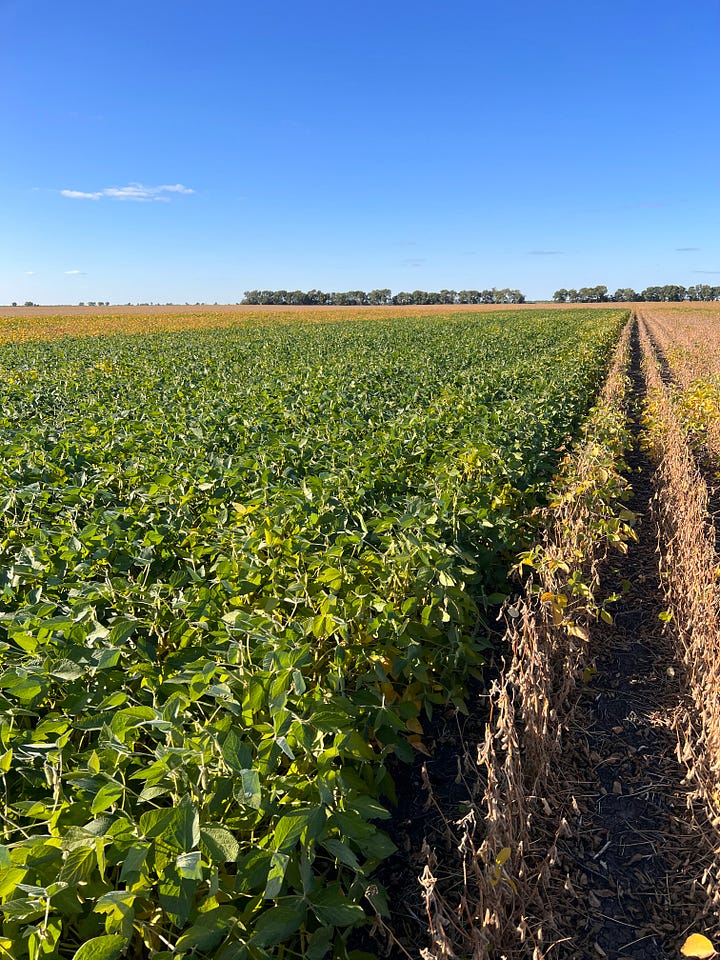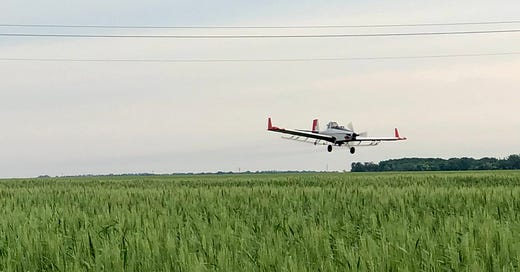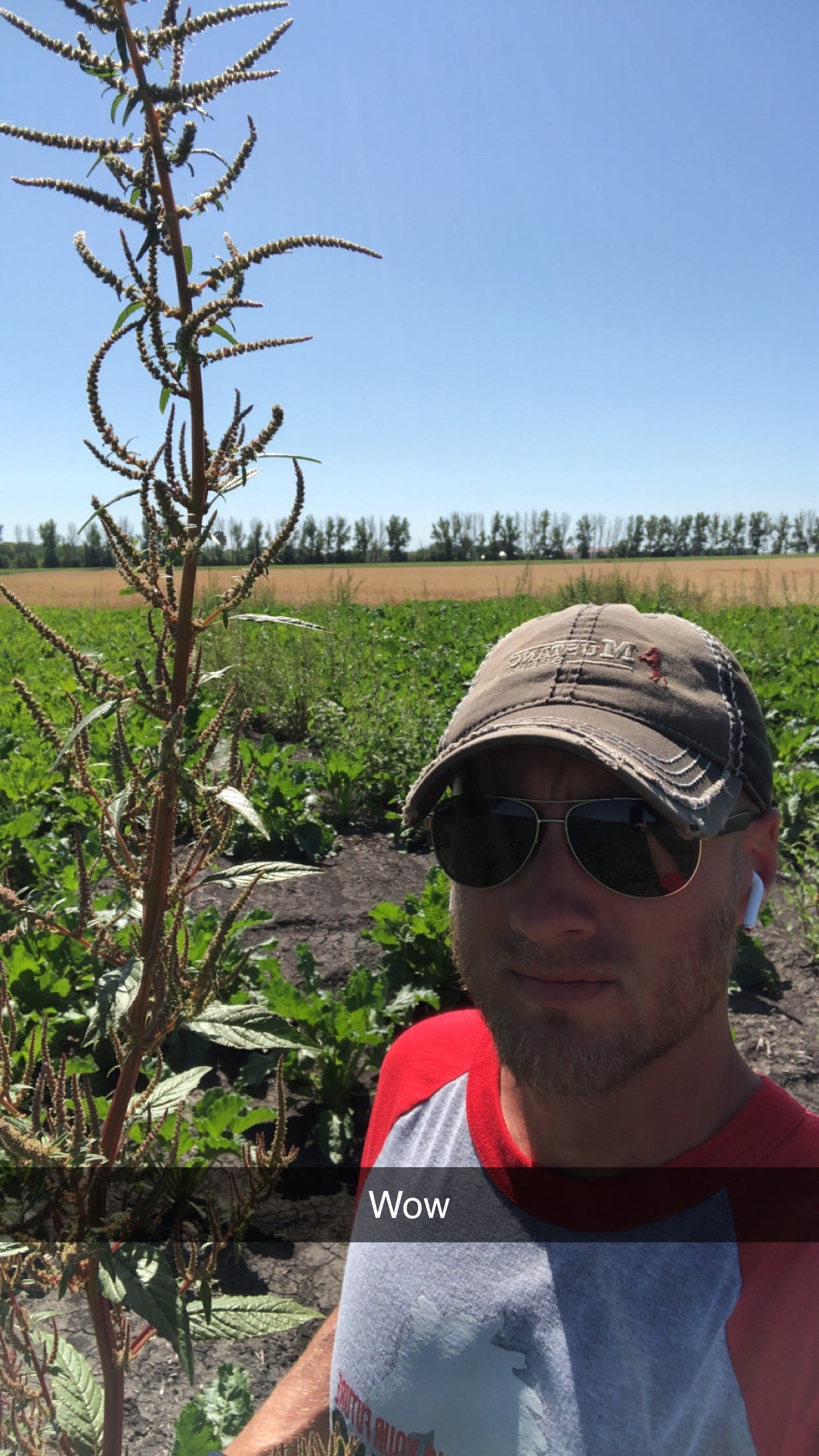Times have changed.
In the old days, we’d throw a couple of pints of Hoelon at some wild oats and not only not kill them but piss em’ off enough to eat every last bushel of wheat.
That strategy doesn’t fly anymore.
We’ve done a fantastic job of keeping the weeds at bay for years, but now they are returning and looking to retaliate.
Ten years ago, I was called a fear-mongering conspiracy theorist when I said waterhemp was on its way to our quiet northern communities. Today, you can’t drive across the street without seeing the stuff.
Most plan their crop technologies and herbicide applications well enough to stay on top of weed control. Technology is excellent, but it’s getting tougher for folks to manage these things.
When a weed like waterhemp can have a million seeds on a plant, losing control of a field is not difficult.
I’m seeing more waterhemp in our ditches and scattered patches in beet and bean fields, but not many total disasters in the Northern valley. Next year will likely be another story. Those small patches can get pretty big in a hurry.
Spraying all those acres in the early 2000s with twenty-two ounces of glyphosate and only five gallons of water per acre has returned to haunt our dreams and our fields with waterhemp, kochia, and common ragweed.
Looking back, it doesn’t seem like getting a few more acres done between fills was worth it.
As a wise old man used to say, gee cripes.
Side note, only took me ten newsletter installments to bust out a patented Chuck Field style “gee cripes.”
Not bad.
I miss ya every day, guy. Rest in peace.
So, what’s the plan? How will we keep the valley from turning into a tall, fuzzy green carpet?
Coverage is Key
Number one, the most important thing you gotta remember, and you’re going to hate me for this, but if you haven’t already, you have to get used to using a lot of water. I’m talking a minimum of twelve gallons when spraying wheat and even higher on other crops.
Regarding soybeans, the Enlist application guide says 10-15 gallons will work. Let me tell you something: those are rookie numbers. You gotta bump that up to 15 gallons, and if you’ve got Liberty in the tank, you best be putting 20 gallons down.
It’s a lot of water. It’s a lot of filling. Believe me. I know. A few years ago, I spent a summer truckin’ water for a guy near Kindred in a 1986 Kenworth with no brakes and a steering wheel that turned three and a half times before the wheels decided to get to work.
I know what I’m talking about here.
You need to cover those weed plants with as much water and chemmy to ensure that the sucker is dead. If you’re not doing that, the steps from here on out don’t matter.
Don’t Cut Rates
This kind of corner-cutting pushed us into this whole weed resistance ballgame in the first place.
That’s bush league.
Knock it off.
Spray your herbicide’s recommended rate.
Spray Early, Spray Often
Again, I know it sucks. None of us want to spend our summers in the sprayer, but if we are to keep these weeds under wraps, the lake and the golf course will have to wait.
It’s much easier to control a two-inch weed than a twelve-inch weed. As soon as your agronomist, guiding light, or the universe hands you your spray recommendations, get out there and hit that.
Don’t be one of those guys who waits for three-foot weeds before pulling the trigger.
Use a Pre-Emerge Herbicide
Besides the dry bean and sunflower fellas, I hardly know anybody doing much of this up here. Since we’re not far from pre’s becoming an ordinary practice, you might as well start now.
I’m not going to get into what chemicals you can use to stay on top of what weeds; that's best left to the agronomists who get paid to do this stuff.
I’m just the messenger here, and I know this much. The longer you keep those weeds from coming up, the easier it is to control them when they emerge.
Use a pre-emerge herbicide. You’ll be happy you did.
Use Multiple Modes of Action
Not only with your chemicals but with your genetics.
Xtend. Enlist. Liberty. XtendFlex. Before long, we’ll have a bean with all of these blended into one trait-stacked soybean. But for now, it’s a mess and confusing.
All the trait options available today make a guy go cross-eyed. How do you know what’s best to use on your farm?
Everybody’s situation is different, but my generic answer is to mix it up. Plant enlist for a year or two, then switch to XtendFlex, or vice versa.
Just as we rotate our crops, we must do the same with our traits to keep the weeds guessing.




Fillin’ Pods
Reaping time is near, and I’m as excited as a gold-digger who just sunk her claws into a newfound fructose father.
Here we are, a few days away from harvesting our earliest (.006) maturity soybeans, and I’ve got the itch to start guessing what things will run.
I’m obsessed with this stuff. It’s what we live for. We pop a crop in the ground in April or May, occasionally in June. Then we sit and watch the sucker grow every day for months.
When the harvest is this close, and the neighbors get harvesting before us, I find myself in the corner, rocking and scratching myself like a junkie desperate for the spike. I can’t wait to see what’s out there.
Early reports from our area's first few soybean fields have been mixed, with a few fields surprising to the upside. With the lack of moisture through the growing season, I’ll be surprised if some of the bigger numbers we’ve been hearing hold up.
Then again, 2023 has been a year loaded with surprises.
Here’s to hoping you also have a few surprises in your row crops.
Have a safe harvest, boys and girls.
Tragedy Takes a Local Treasure
Sadness replaced any pre-harvest excitement in our area this week when we lost one of our local pilots in a tragic spray plane accident.
Unfortunately, other than a quick meet and a handshake last winter, I never got the chance to get to know Tyler, the thirty-three-year-old who left us much too soon.
After witnessing the impact of his loss on my close friends, I realized I missed out on getting to know an exceptional young man.
Every picture and video people shared of Tyler this week tells the story of a man who loved flying and life altogether.
The smile says it all.
Tyler's aerial wizardry was awe-inspiring. His flying style exemplified how we should live our lives - in control yet constantly pushing ourselves to the limit.
My heart goes to friends, family, and anyone blessed to know and love such a wonderful soul.
One More Roll
We toast our hearty comrades who have fallen from the skies and were gently caught by God's own hand to be with him on High.
To dwell among the soaring clouds they've known so well before. From victory roll to tail chase at heaven's very door.
As we fly among them there, we're sure to head their plea. To take care, my friend, watch your six, and do one more roll for me.
— Commander Jerry Coffee, Hanoi, 1968.
Take care of yourselves, my friends.
I wish you all blue skies and tailwinds.
See ya next week.








